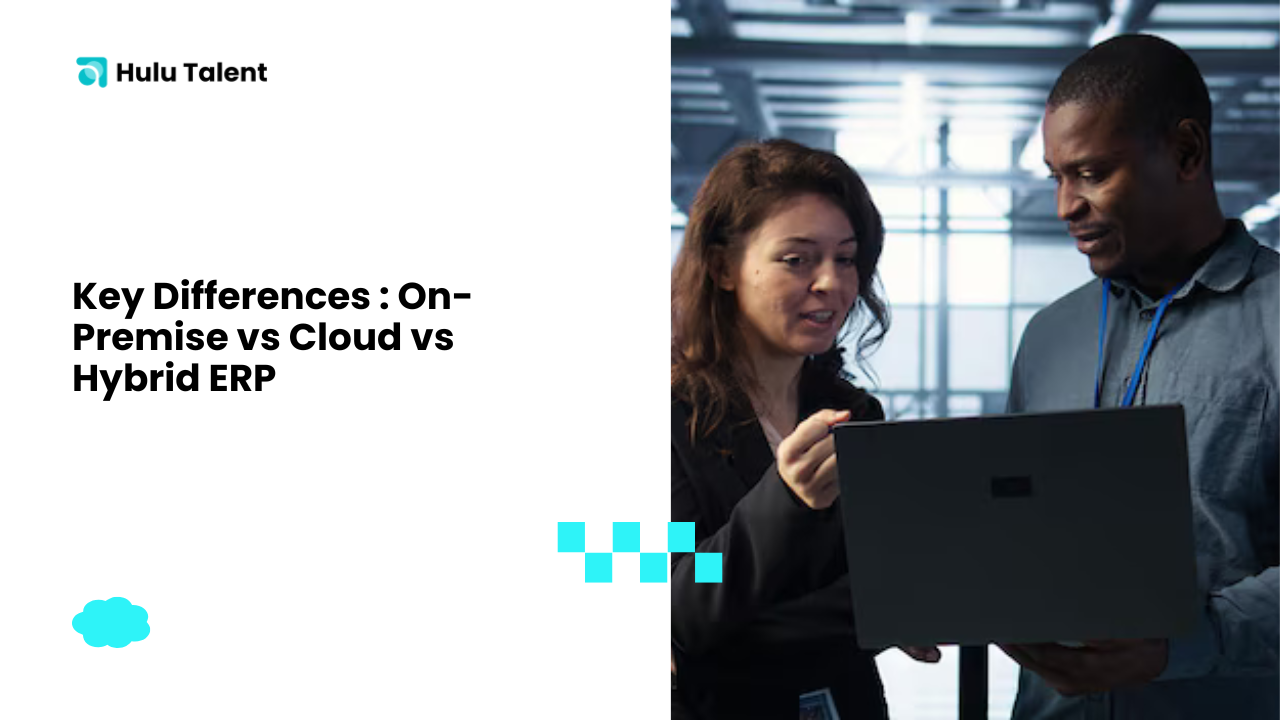In today’s rapidly evolving business environment, ERP systems have become essential tools for streamlining operations, improving decision-making, and enhancing productivity. However, choosing the right ERP deployment model—on-premise, cloud-based, or hybrid—can be a complex decision for many organizations. Each type comes with its own set of advantages and limitations. This article explores the key differences between these three ERP deployment options to help businesses make an informed choice.
What is an ERP Systems?
ERP (Enterprise Resource Planning) software integrates core business processes such as finance, supply chain, human resources, and customer relationship management into a unified system. The goal is to enable seamless data flow across departments, eliminate silos, and improve overall business efficiency. While the functionalities of ERP systems remain largely consistent, the way these systems are deployed—on-premise, cloud, or hybrid—can significantly impact performance, cost, and scalability.
1. On-Premise ERP Systems
Definition
On-premise ERP systems are installed locally on a company’s own servers and managed by its internal IT team. This traditional approach has been the standard for many years, especially among large enterprises with extensive infrastructure.
Key Features
- Full control over the software and data
- High customization to meet specific business needs
- One-time licensing fees with ongoing maintenance costs
- Requires dedicated IT staff and hardware infrastructure
Advantages
- Greater data security and privacy due to in-house control
- Can be customized more deeply than cloud solutions
- Not reliant on internet connectivity for daily operations
Disadvantages
- High upfront investment in hardware and software
- Longer deployment time
- Expensive maintenance and upgrades
- Scalability is limited and often requires additional hardware
2. Cloud-Based ERP Systems
Definition
Cloud ERP systems are hosted on the vendor’s servers and accessed via the internet. This Software-as-a-Service (SaaS) model allows businesses to use the software on a subscription basis without investing in physical infrastructure.
Key Features
- Web-based access anytime, anywhere
- Regular automatic updates
- Subscription pricing (monthly or yearly)
- Managed and supported by the ERP vendor
Advantages
- Lower initial costs and predictable pricing
- Faster implementation and easy upgrades
- Scalable as your business grows
- Remote access supports work-from-anywhere culture
Disadvantages
- Limited customization options compared to on-premise
- Dependence on reliable internet connectivity
- Potential concerns over data ownership and security
3. Hybrid ERP Systems
Definition
Hybrid ERP combines both on-premise and cloud components. It allows businesses to keep critical functions on-site while leveraging cloud services for others, offering a more flexible deployment.
Key Features
- Mix of local and cloud-based infrastructure
- Enables gradual cloud adoption
- Balances security with flexibility
- Often used by companies transitioning from on-premise to cloud
Advantages
- Offers customization and scalability
- Reduces dependence on physical infrastructure
- Ideal for businesses with unique regulatory or operational requirements
Disadvantages
- Integration between on-premise and cloud components can be complex
- May involve higher management overhead
- Requires both internal IT and vendor coordination
How to Choose the Right ERP Deployment for Your Business
When choosing between on-premise, cloud, and hybrid ERP systems, businesses should evaluate several key factors:
1. Budget and Resources
- Limited budget or small teams? Cloud ERP offers low upfront costs and minimal IT requirements.
- Established infrastructure and IT staff? On-premise may work better for companies with robust internal capabilities.
2. Customization Needs
- Companies with complex workflows or industry-specific requirements might benefit from on-premise or hybrid solutions for deeper customization.
3. Data Security and Compliance
- If your industry requires strict data control (e.g., healthcare or finance), an on-premise or hybrid model may better suit your compliance needs.
4. Scalability and Growth
- Cloud ERP solutions are ideal for rapidly growing companies, offering easy scalability without large infrastructure investments.
5. Internet Reliability
- Businesses in areas with unreliable internet connectivity might lean toward on-premise ERP to avoid disruptions in operations.
Trends in ERP Deployment
With the rise of remote work, AI integration, and real-time analytics, many businesses are transitioning from traditional on-premise solutions to cloud-based or hybrid ERP models. Vendors are also enhancing cloud ERP capabilities to include features like machine learning, predictive analytics, and mobile access, making cloud deployment more attractive than ever.
Meanwhile, hybrid ERP remains a viable option for businesses that want to modernize gradually, combining the security of on-premise with the flexibility of cloud.
Conclusion
Choosing the right ERP system is more than a technical decision—it’s a strategic one. On-premise ERP systems offer control and customization, but come with higher costs and complexity. Cloud ERP solutions provide affordability, ease of access, and scalability, making them a strong choice for growing businesses. Hybrid ERP models deliver a balanced approach, offering the best of both worlds for companies in transition or with diverse operational needs.
Each model serves different types of businesses, and the ideal choice depends on your company’s size, goals, industry regulations, and long-term vision. By understanding the core differences between on-premise, cloud, and hybrid ERP systems, businesses can make smarter investments and build a more agile, future-ready infrastructure.

